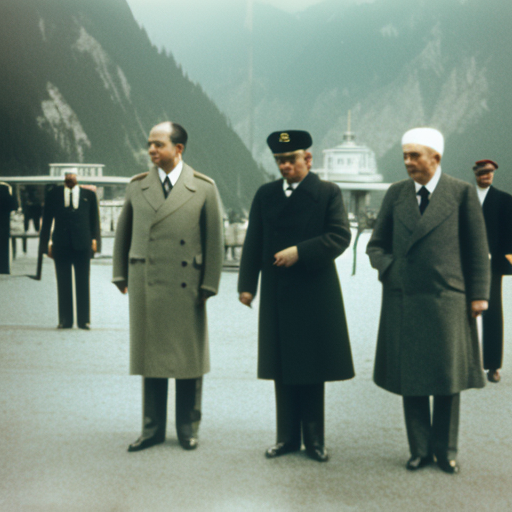Summary:
The Yalta Conference was a meeting held in February 1945 between the leaders of the United States, the Soviet Union, and the United Kingdom. The conference took place in the Crimean resort town of Yalta and aimed to discuss the post-World War II reorganization of Europe and the establishment of a new world order. The three main leaders at the conference were Franklin D. Roosevelt, Winston Churchill, and Joseph Stalin. The Yalta Conference resulted in several agreements, including the division of Germany into occupation zones, the establishment of the United Nations, and the declaration of war against Japan.
The Context:
By early 1945, the tide of World War II had turned in favor of the Allies. The Soviet Union had pushed the German forces back to their own territory, and the Western Allies were making significant progress in their campaigns. With victory on the horizon, the leaders of the Allied powers sought to plan for the post-war world and address the key issues that would shape the future.
The Agreements:
At the Yalta Conference, the leaders reached several important agreements. One of the main outcomes was the division of Germany into four occupation zones, to be administered by the United States, the Soviet Union, the United Kingdom, and France. Berlin, located in the Soviet zone, would also be divided into four sectors. This division set the stage for the subsequent Cold War between the Soviet Union and the Western Allies.
Another significant agreement was the establishment of the United Nations. The leaders recognized the need for a new international organization to maintain peace and prevent future conflicts. The United Nations would replace the ineffective League of Nations and serve as a forum for international cooperation and dispute resolution.
The leaders also discussed the issue of Poland and agreed to hold free elections in the country to determine its future government. However, this agreement would later be violated by the Soviet Union, which installed a communist government in Poland and suppressed opposition.
The Declaration on Liberated Europe:
The Yalta Conference also resulted in the Declaration on Liberated Europe, which outlined the principles for the post-war reorganization of Europe. The leaders affirmed their commitment to self-determination, democracy, and the protection of human rights. They also agreed to work together to rebuild war-torn countries and promote economic recovery.
However, the declaration was met with skepticism by some who believed that the Soviet Union would not honor its commitments to democracy and freedom. This skepticism proved to be justified, as the Soviet Union exerted its influence over Eastern Europe and established communist governments in several countries.
The Impact:
The Yalta Conference had a significant impact on the post-war world. The division of Germany and the establishment of the United Nations shaped the geopolitical landscape for decades to come. The conference also marked the beginning of the Cold War between the Soviet Union and the Western Allies, as tensions between the two sides escalated in the following years.
The Yalta Conference is often criticized for the concessions made to the Soviet Union, particularly regarding Eastern Europe. Critics argue that the conference allowed the Soviet Union to extend its influence and establish communist governments in the region, leading to decades of oppression and conflict.
In conclusion, the Yalta Conference was a crucial meeting that shaped the post-World War II world order. The agreements reached at the conference had far-reaching consequences, setting the stage for the division of Germany, the establishment of the United Nations, and the beginning of the Cold War. Despite its flaws and the subsequent violations of some agreements, the Yalta Conference remains a significant event in history.












